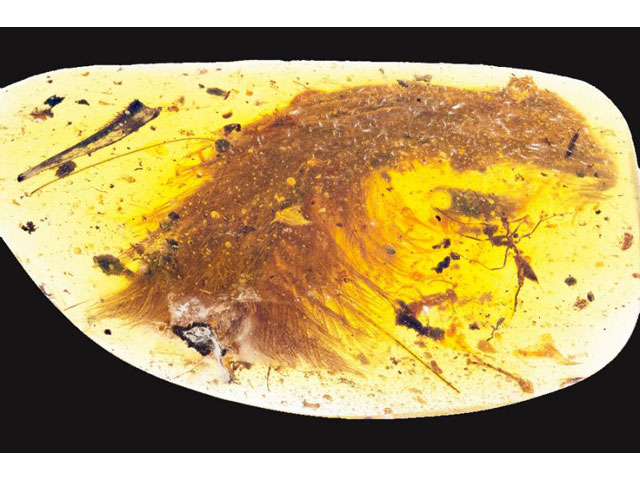
One of the lead authors, Lida Xing from the China University of Geosciences, happened upon the feathered dinosaur fossil at an amber market in Myanmar last year.
The chance find lends fresh insight into the extinct feathered creatures as well as the evolution of feathers themselves.
"This is a new source of information that is worth researching with intensity and protecting as a fossil resource," said Ryan McKellar, one of the scientists who worked on the study published in the US journal Current Biology.
The researchers are sure the amber has preserved a dinosaur and not a prehistoric bird, McKellar said, because "the tail is long and flexible."
'Mud Dragon' fossil shows dinosaurs thrived on eve of destruction
"The new material preserves a tail consisting of eight vertebrae from a juvenile; these are surrounded by feathers that are preserved in 3D and microscopic detail," said the co-author and scientist from the Royal Saskatchewan Museum in Canada.
Though the entire tail was feathered, the dinosaur likely could not fly, the paleontologist noted.
The plumage probably helped the animal with mating rituals or with thermal regulation, McKellar said.
Feathers dating back to the time of dinosaurs have already been discovered in amber, but this is the first time scientists have been able to definitively link a specimen to a dinosaur, researchers said.
Scientists analysed the amber inclusion using CT scanning and microscopic observations.
India's 'Dinosaur Princess' keeps watch over rare remains
Their analysis deduced that the feathers were dark brown on top with a pale or white underside. A soft tissue layer around the bones contained traces of ferrous iron from hemoglobin preserved in the sample.
In the acclaimed science-fiction film "Jurassic Park," scientists managed to clone dinosaurs from DNA found in a piece of amber.
The fossilised tree resin is often used in jewelry, but McKellar said this find highlights the importance of amber to paleontological research.
"Amber pieces preserve tiny snapshots of ancient ecosystems, but they record microscopic details, three-dimensional arrangements, and labile tissues that are difficult to study in other settings."
1732434981-0/BeFunky-collage-(10)1732434981-0-405x300.webp)




1732428810-0/Copy-of-Untitled-(3)1732428810-0-270x192.webp)
1732425487-0/BeFunk_§_]__-(42)1732425487-0.jpg)










COMMENTS
Comments are moderated and generally will be posted if they are on-topic and not abusive.
For more information, please see our Comments FAQ